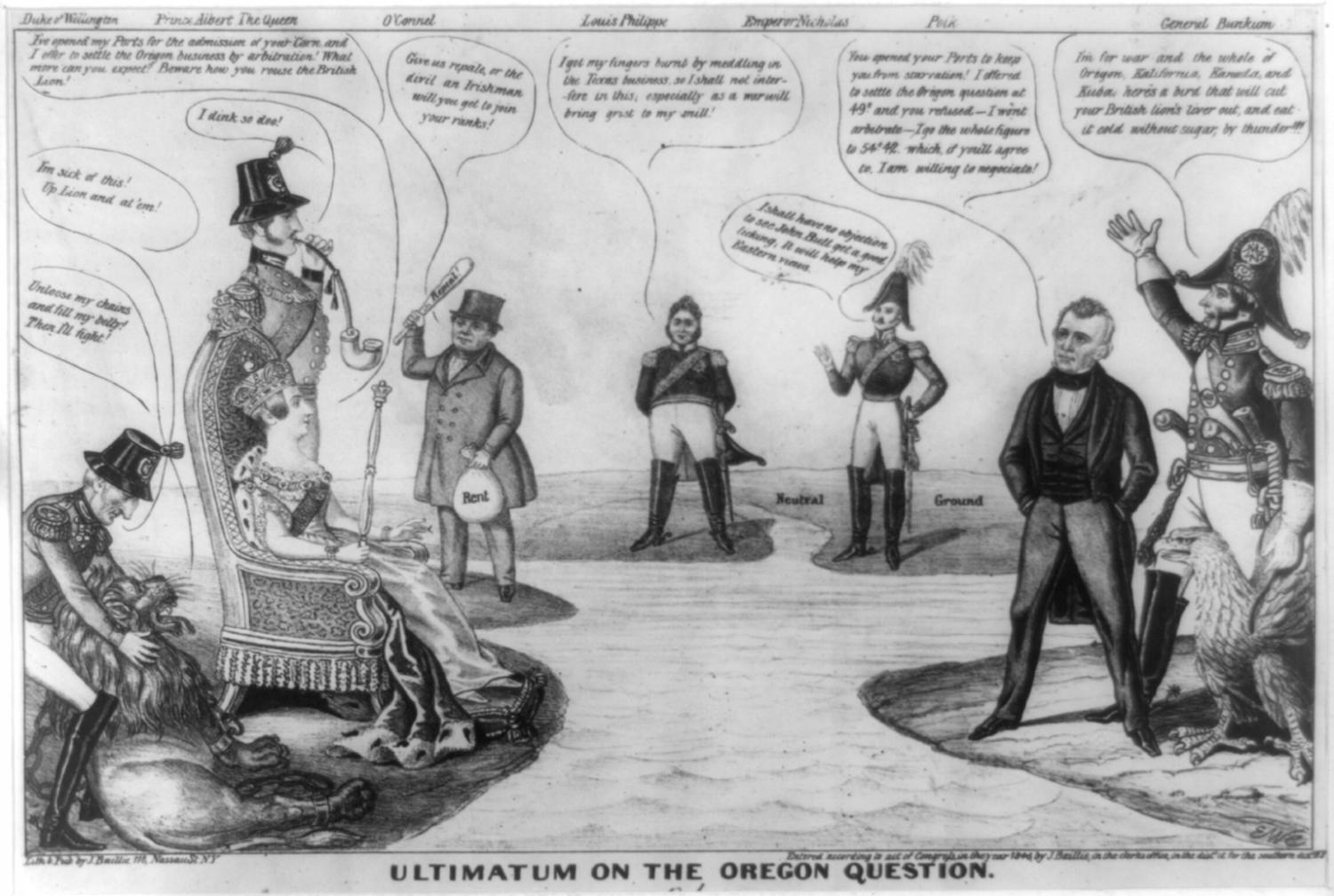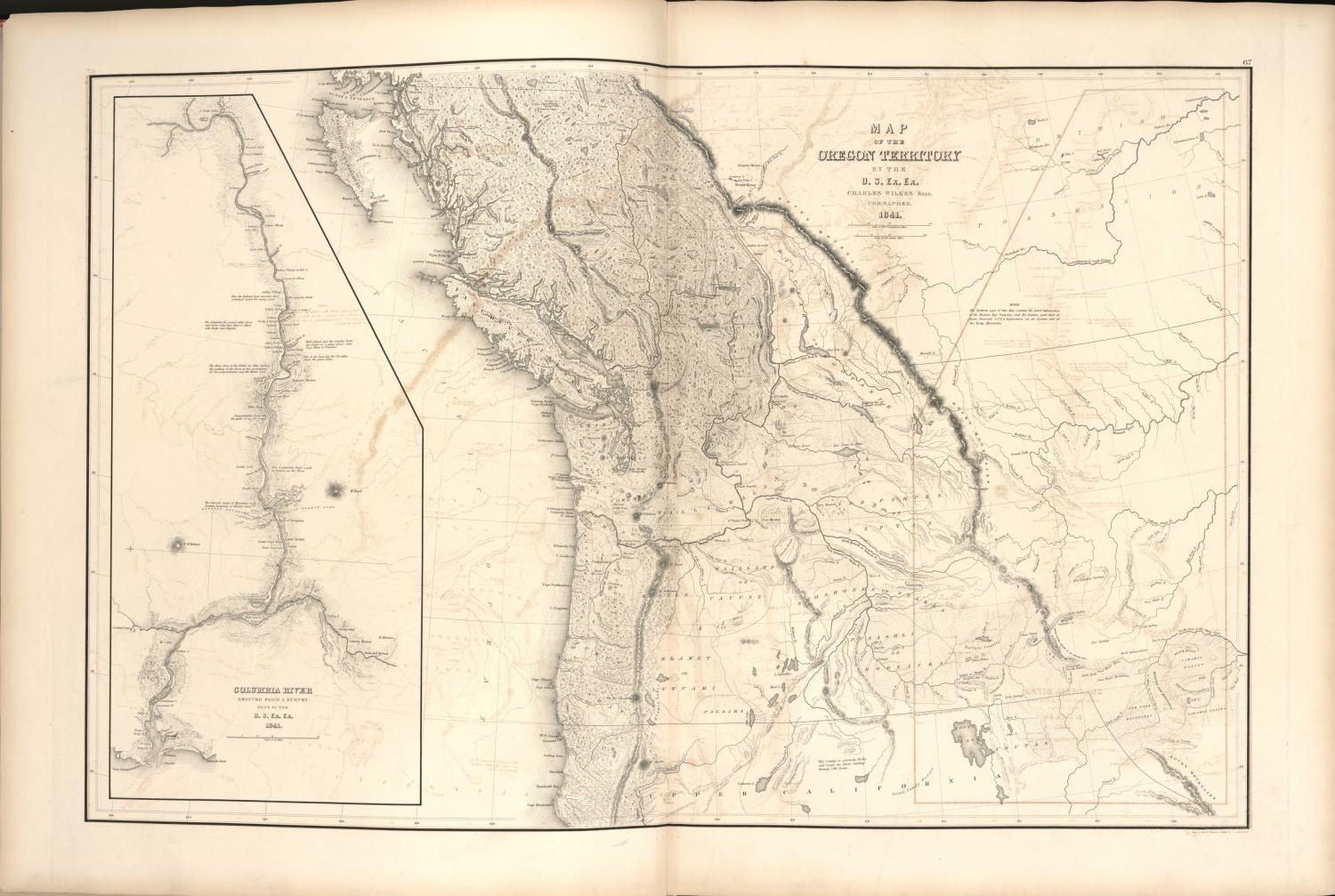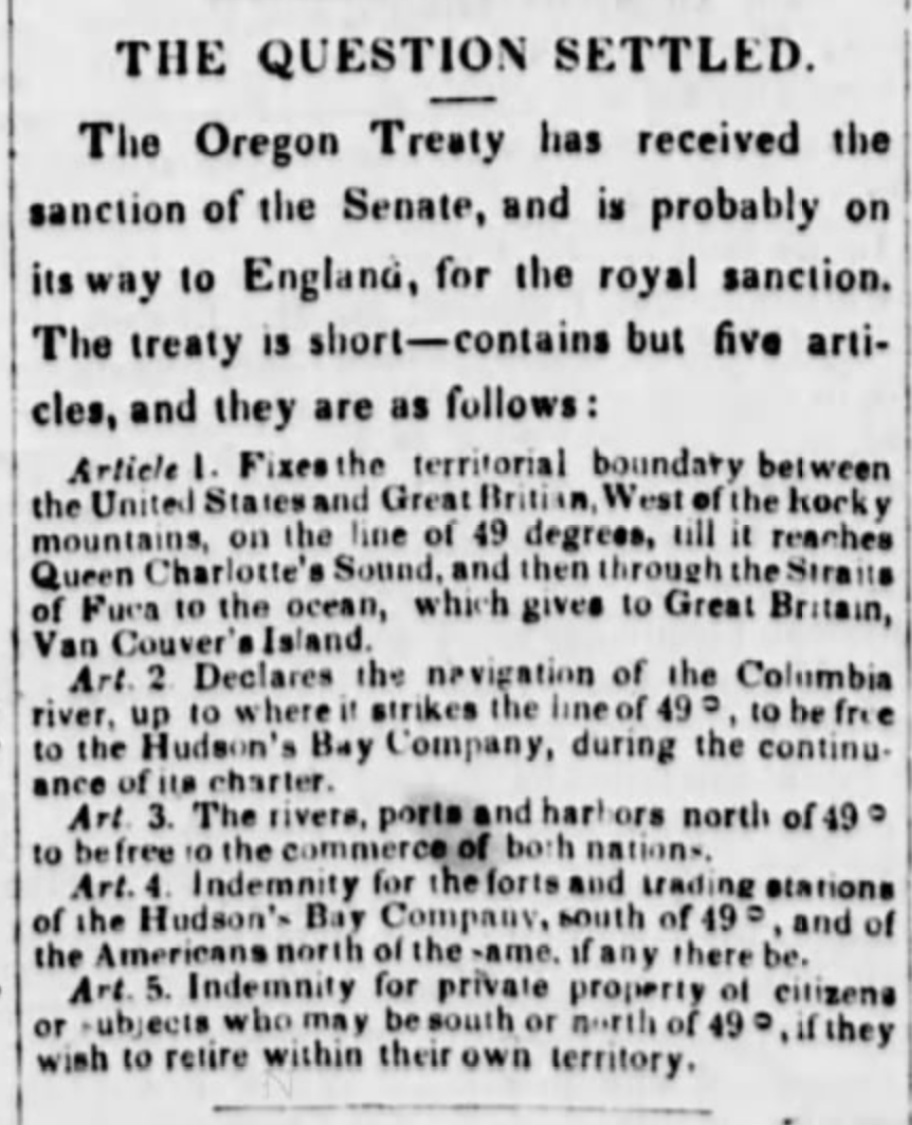The Oregon Treaty
B.C.'s future border is drawn at the 49th parallel
Date: 1846
In 1845, James K. Polk became president after promising American voters he would significantly expand the country’s dominion. But that would not be an easy feat. Following the annexation of Texas, the United States entered a war with Mexico in 1846. The two-year battle ended in an American victory, and the spoils of war were overwhelming. The U.S. kept all of Texas but also gained what would become California, New Mexico, Utah, Nevada, as well as much of Arizona and parts of Wyoming and Colorado. Polk’s quest to capture Oregon Country would prove less rewarding.
Since 1818, Britain and the United States had jointly occupied the Oregon Territory, otherwise known as the Columbia District or Department. The territory stretched from the western parts of modern-day Montana and Wyoming through Washington, Oregon, Idaho and much of British Columbia. During the 1844 presidential campaign, Polk’s Democrats promised to assume control of all of Oregon Country. But in the early days of his presidency, Polk made Britain an offer to draw a permanent border along the 49th parallel, with the southern tip of Vancouver Island under American control. The British rejected his proposal, and by the end of 1845, the American president had renewed his demand for ‘54-40.’ American expansionists cheered him on: “54-40 or Fight!”
Although Americans outnumbered British colonists in the Oregon Territory by more than six to one, Polk was reluctant to start another war. On June 15, 1846, Britain and the United States signed the Oregon Treaty, agreeing to split control of the territory at the 49th parallel. Britain secured the entirety of Vancouver Island, a notable American concession. Though conflict was avoided, Americans continued to pour into the west, and it wouldn’t take long before Britain grew anxious over the potential for American annexation of what is now known as British Columbia.
Sources:
- “54° 40’ or Fight.” Ushistory.Org, Independence Hall Association, 2008, www.ushistory.org/us/29b.asp.
- “Establishing Borders: The Expansion of the United States, 1846-48.” Smithsonian Center for Education and Museum Studies, 2020, www.smithsonianeducation.org/educators/lesson_plans/borders/essay3.html.
- Ficken, Robert. Unsettled Boundaries: Fraser Gold and the British-American Northwest. Illustrated, Washington State University Press, 2003.
- Pinheiro, John. “James K. Polk: Foreign Affairs.” Miller Center, 4 Oct. 2016, millercenter.org/president/polk/foreign-affairs.
- “The Oregon Territory, 1846.” Office of the Historian, United States Department of State, 2020, history.state.gov/milestones/1830-1860/oregon-territory.
- The White House. “James K. Polk.” The White House, 18 Jan. 2021, www.whitehouse.gov/about-the-white-house/presidents/james-k-polk.
- White House Historical Association. “The Enslaved Households of President James K. Polk.” WHHA (En-US), 3 Jan. 2020, www.whitehousehistory.org/the-enslaved-households-of-james-k-polk.






